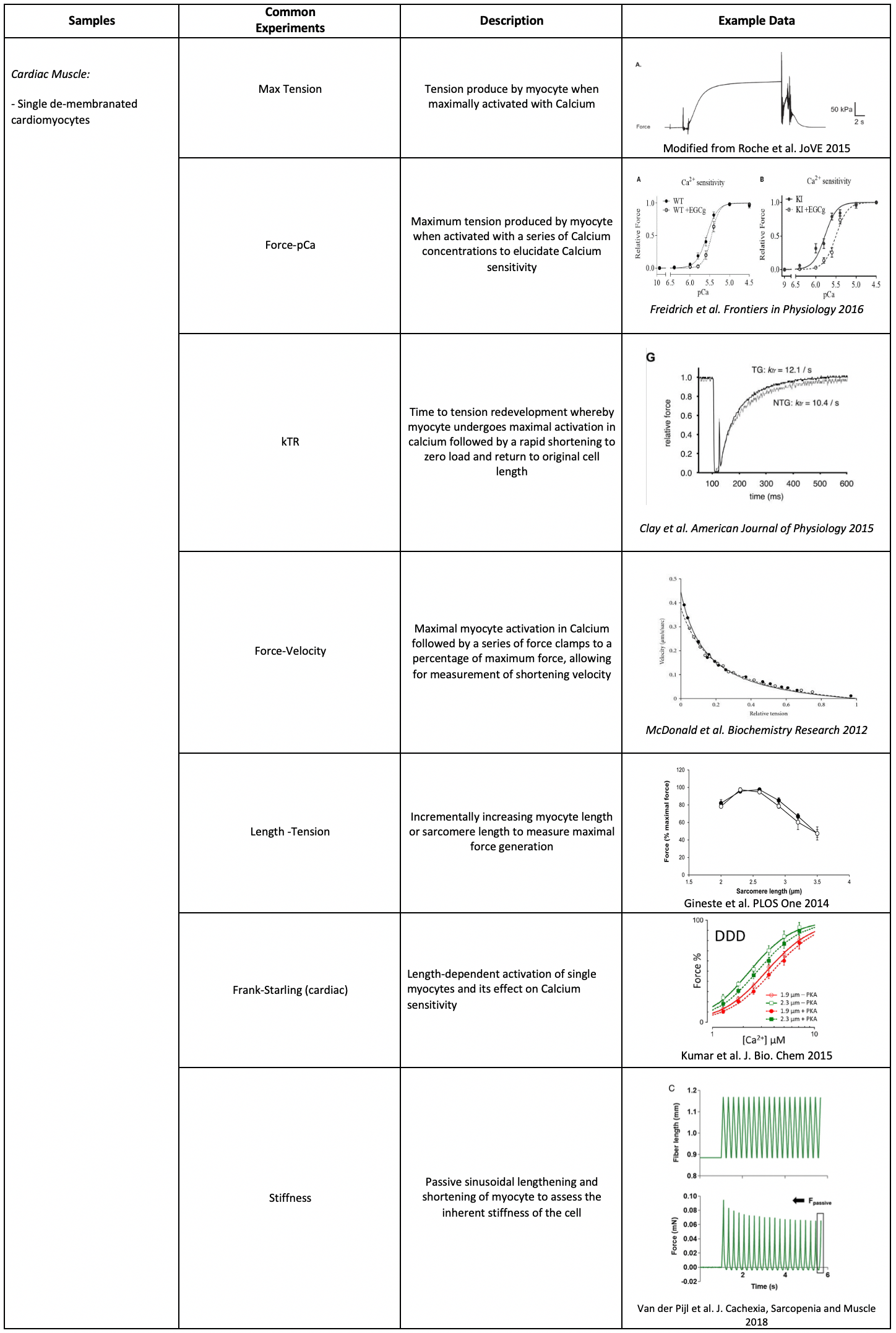Aurora Scientific offers several different test systems to evaluate the various structural levels of muscle. However, there are many examples of these systems being used for other types of compliant tissues and materials. Most of these systems are able to work with a multitude of different samples and perform a wide array of experiments. This blog is meant to be a quick, comprehensive guide to what research has been done with the systems and a primer for anyone searching for the right system for their research.
1200A/1205A Isolated Muscle Systems for Mice and Rats
The 1200A series of systems were inspired by the classic, vertical organ bath chambers which have become virtually synonymous with muscle physiology and mechanics. These chambers were originally designed to work with skeletal muscles (mostly from the limb) in mice and rats. The big advancement from these classic style of organ baths is the ability to change muscle length rapidly meaning that stretch and shortening protocols such as eccentric damage, force velocity and work loops could be performed. Testing the mechanical properties of compliant tissues, artificial muscles and even smooth muscle strips (eg. Stress-strain curves) are also common.
1300A/1305A/1310A Whole Animals Systems for Mice, Rats, Dogs, Pigs and Other Large Animals
Our 1300A system was originally designed solely for performing footplate (in-vivo) experiments in mice and rats. It quickly expanded into a system which could also be used for in-situ experiments and a horizontal in-vitro add on bath was also built. Various versions of the system were later built to accommodate larger animal models up to the size of pigs and dogs, though these variants are in-vivo only. The typical experiments which can be performed are similar to those of the 1200A system family, except that a much broader selection of muscles can be tested by the in-situ method. Those muscles that do not have a surgically accessible tendon or are very large which would have been impossible to test in-vitro are now potentially in play using the in-situ method.
1400A/1405A/1410A/1415A Permeabilized Fiber System
The 1400A family of systems are meant to be used with permeabilized (de-membranated) fibers. These fibers can be from skeletal, cardiac or even smooth samples. Virtually any muscle can be used with the 1400A as practical limitations for attaching to a whole muscle no longer apply. If a biopsy can be taken from a muscle sample, fibers can be harvested for experiments. Single permeabilized fiber mechanics are also unique in that unlike whole muscle, they are not typically activated electrically but rather with a calcium solution gradient. Contractile mechanics parameters must therefore be measured by applying fiber shortening as contraction rates are limited by the diffusion of calcium into the fiber. For those people working on living fibers there exists a special variant of the system with a larger bath and custom constructed electrodes.
1500A/1510A/1530A Small Intact Isolated Muscle System
The 1500A series is the most flexible system in terms of what types of samples it can work with. This system has a small horizontal bath intended for any small skeletal muscles, cardiac and smooth muscle strips, as well smaller intact single fibers and bundles. Mechanical measurements of artificially grown muscle constructs have also been performed with this system. The types of experiments that are performed with this system are similar to the 1200A and 1300A families, however, the 1500A provides additional features and complimentary experiments such as biofluorescence of the tissue as well as the potential to measure oxygen consumption during an experiment.
1600A – Permeabilized Myocyte System
The 1600A system is very similar to the 1400A in terms of the types of experiments which it can perform. The big differences between the two systems are the type of samples which they are meant to work with. The 1600A is intended to work with only permeabilized cardiac myocytes only. These have some advantages as the myocytes may be cultured, ensuring an abundant supply. A calcium gradient is achieved by creating small wells of activating solution and is manually controlled in this system. Although technically possible, it is not common to use larger samples (such as skeletal fibers) with this system as the automation of the 1400A is a more appealing and higher throughput means of testing larger pieces of de-membranated tissue.
1700A – Myofibril System
The 1700A system is only able to work with single myofibrils, though these may be from either skeletal or cardiac muscle. As this is the smallest contractile unit of muscle it provides a truly pure system for investigation of contractile mechanics, which offers a big advantage for investigation of the myofilament. Experiments are similar to those conducted with the 1400A and 1600A systems, however, force-velocity may be challenging because of how small the magnitude of contractile force may be. Sarcomere spacing may also be measured with this system.




